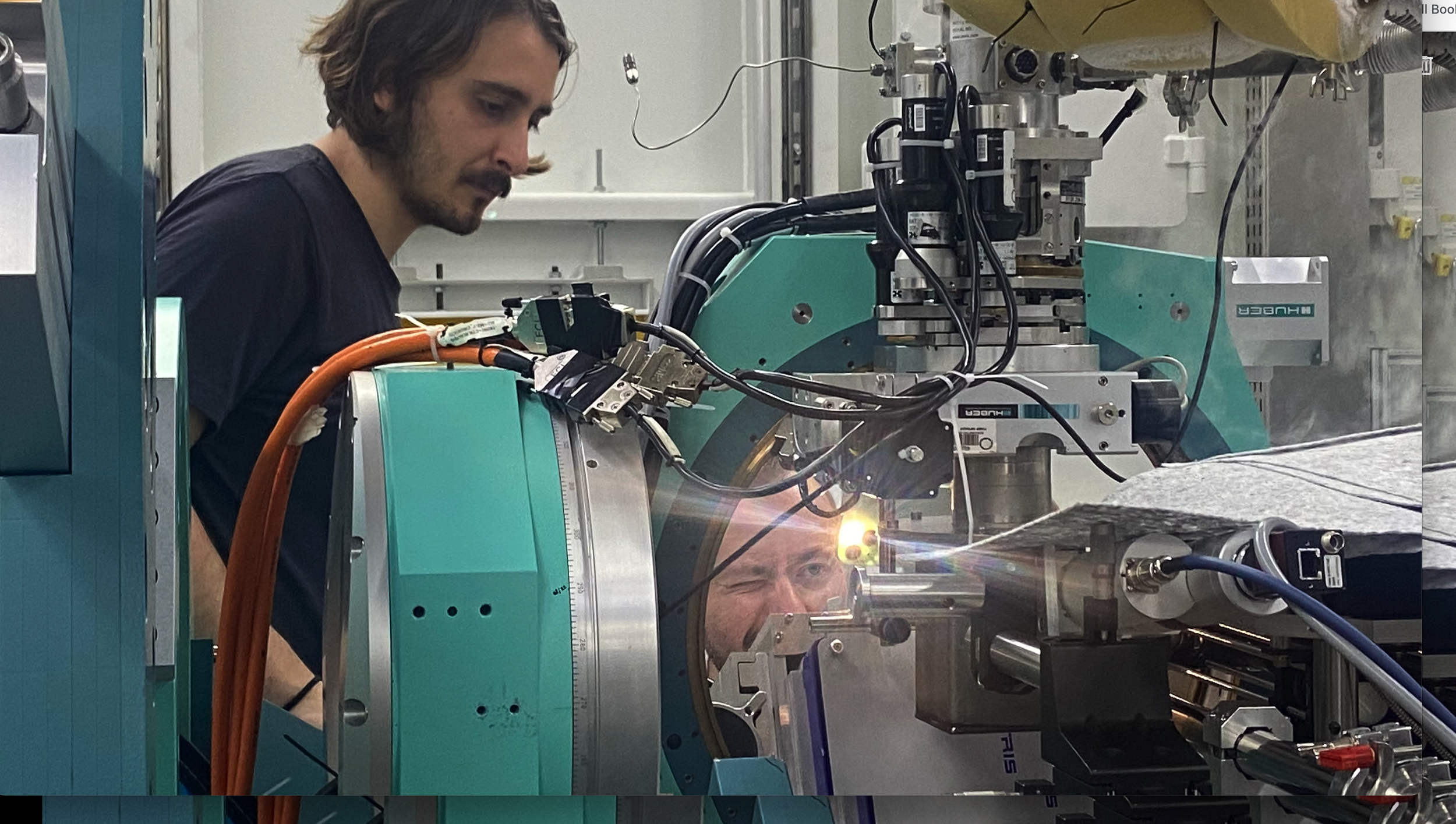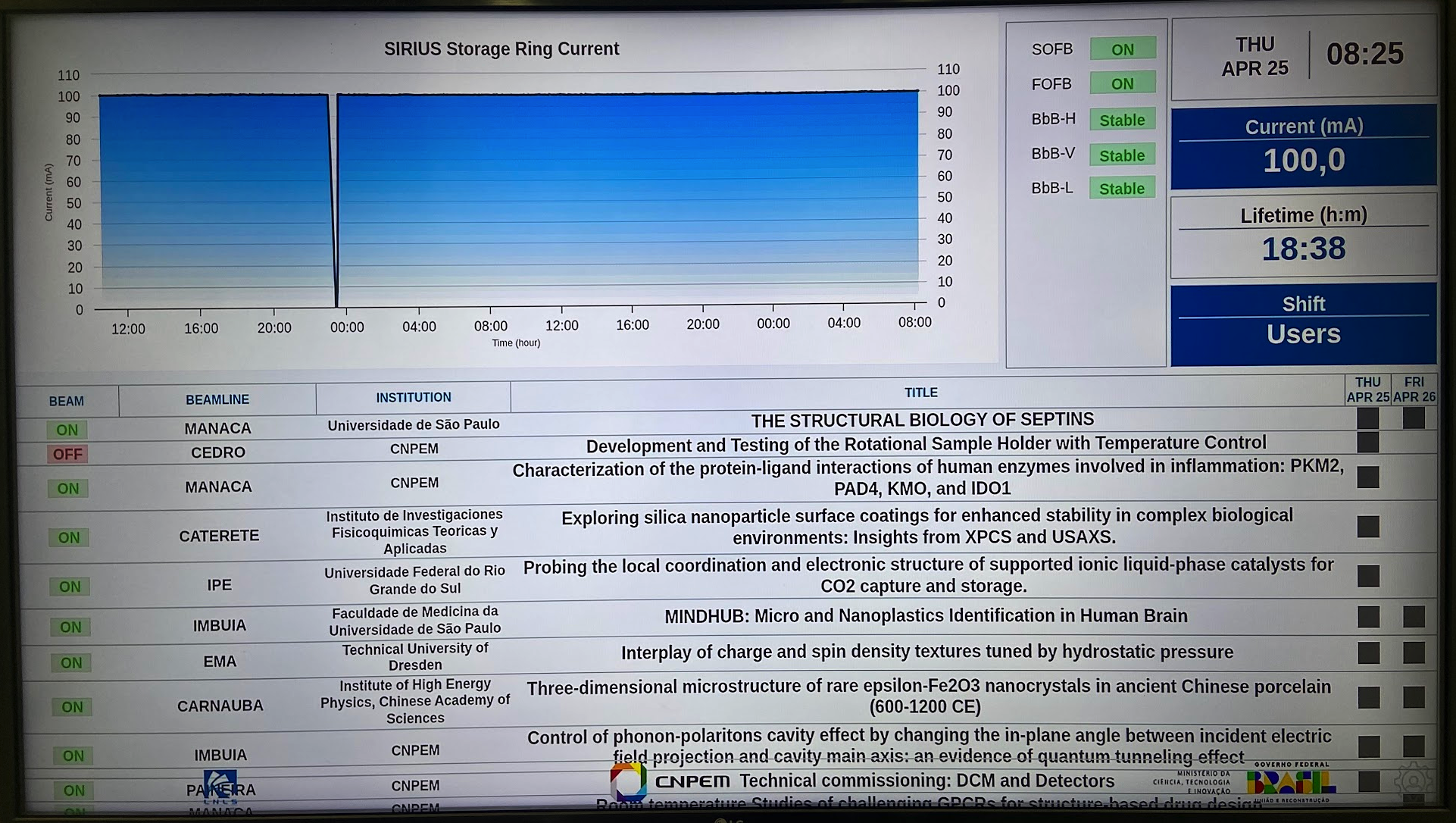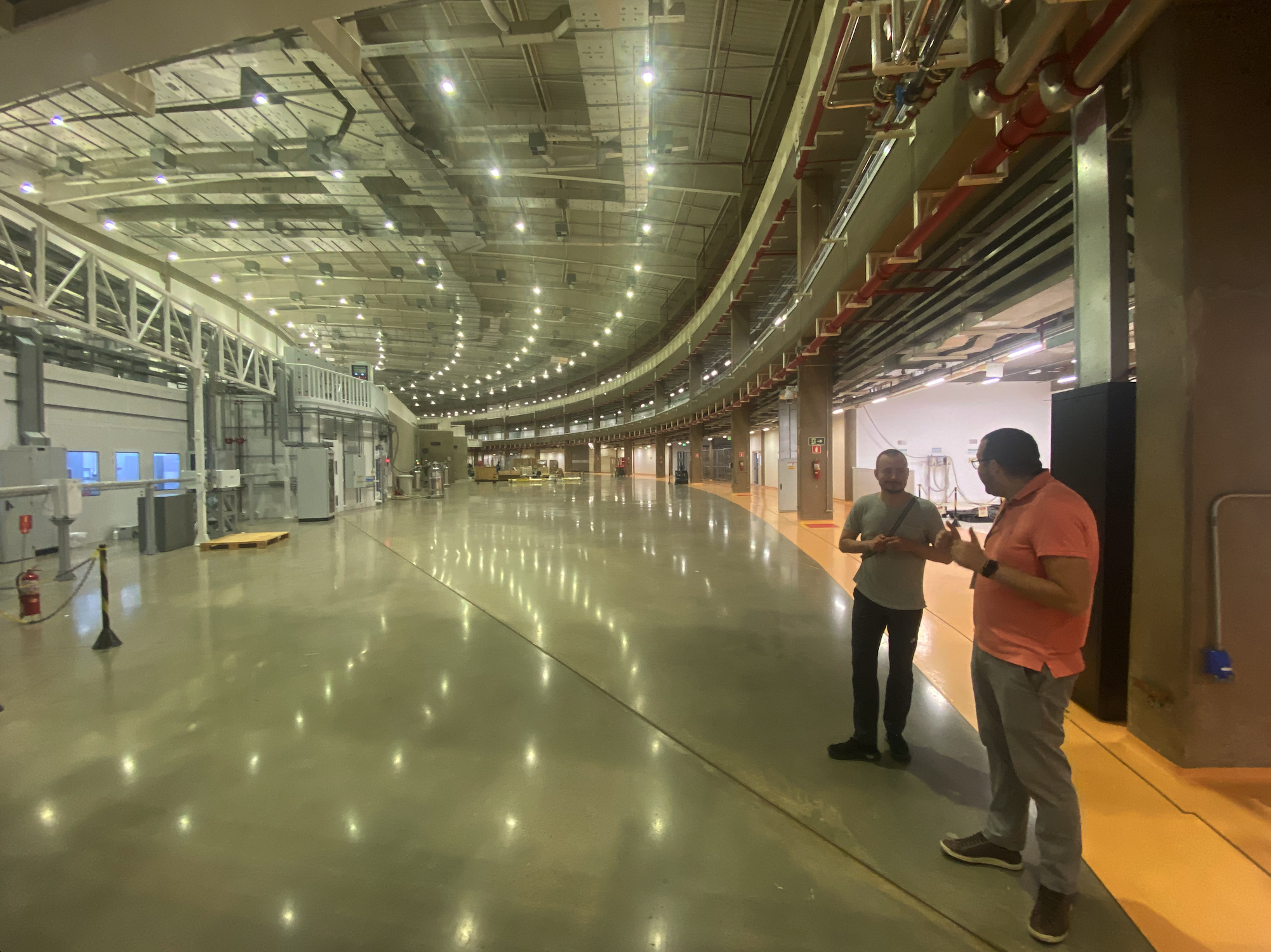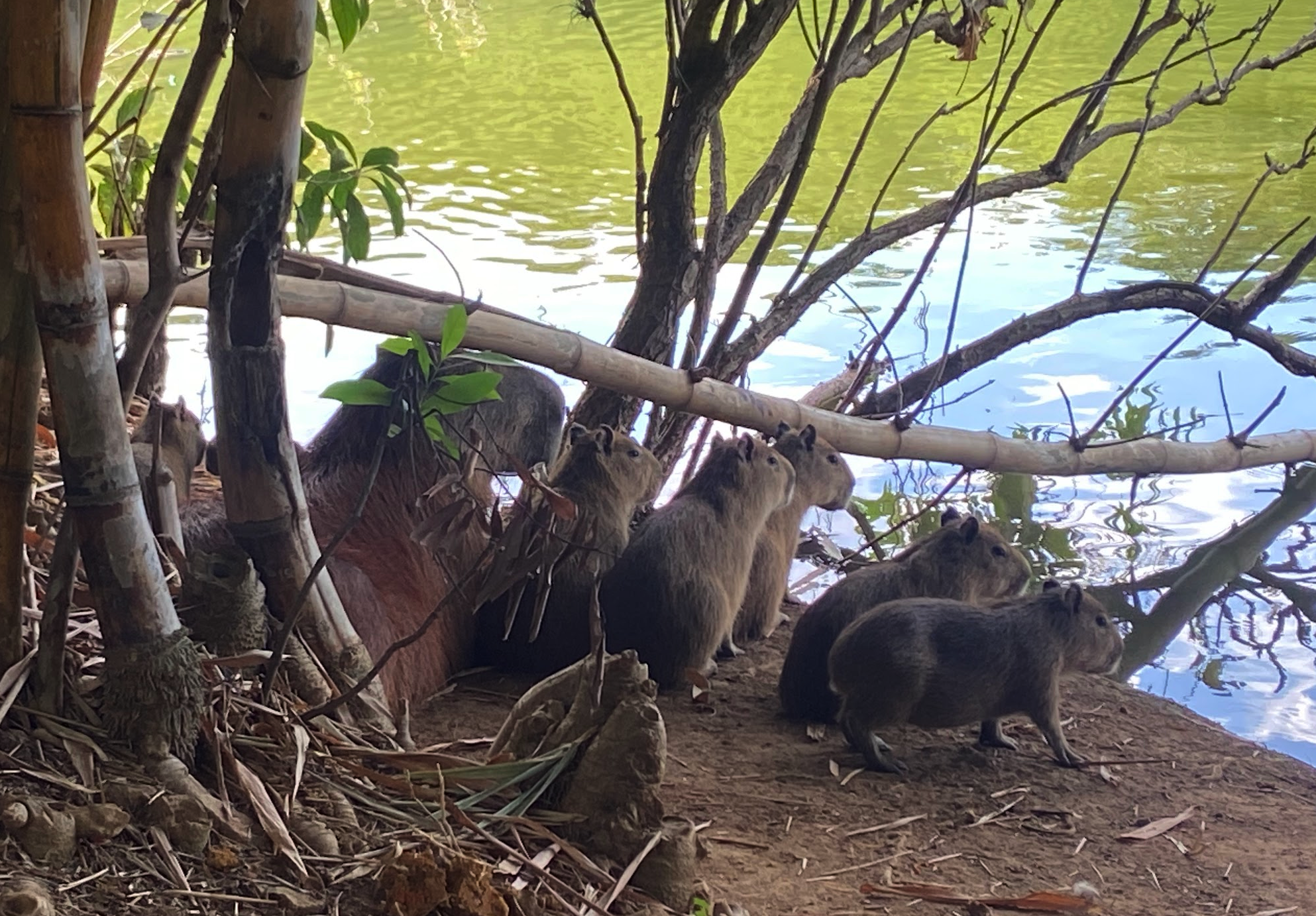Under pressure in Brazil
This week we are doing an experiment at the SIRIUS synchrotron of the Brazilian National Laboratory for Synchrotron Light (LNLS) in Campinas. We had been very excited that our proposal was selected for beamtime at the highly oversubscribed new beamline EMA. I first became aware of this instrument at the SCES conference in 2022, where Audrey Grockowiak presented her findings on high temperature (high pressure) superconductivity in a rare earth hydride. The Extreme conditions Methods of Analysis beamline (named after the ema) is an exciting instrument for us because it offers both the infrastructure and the expertise to carry out diffraction studies on samples in membrane-driven diamond anvil pressure cells. Crucially, SIRIUS is one of the first 4th generation light sources - its extremely focused beam allows to investigate tiny crystals without wasting photons.
Preparing the samples is, in fact, one of the big challenges of such experiments. Having obtained the crystals from our collaborator Jaime Moya of Rice University (now at Princeton), we prepared our samples by orienting them along a strategic direction and then polishing and cutting them using a focused ion beam - down to dimensions of 10~40 micrometres. Mounting such a tiny platelet in the desired orientation in a 150-micrometre sample chamber and placing a ruby sphere (our pressure calibrant) next to it is a real challenge, even with very calm hands. But the challenges don’t not stop there. Low-temperature single crystal x-ray diffraction under pressure is tricky, but we will also try to search for magnetic scattering. This about combines all conceivable technical limitations (high absorption, constrained momentum transfer, beam heating, ...).
sample in place
a square sample platelet with its edges cut along the crystal axes (ca. 40 um wide) along with two ruby spheres (top) placed within a whole in the gasket.
The subject of this study is EuGa2Al2, a close relative of EuAl4 (see our recent phonon study). The interest in these materials is the competition of itinerant correlations between europium magnetic moments. Recent studies showed that this results in some unusual modulated magnetic structures, including potentially topologically non-trivial magnetic textures. Interestingly, these phenomena arise not in the bare tetragonal crystal but on the back of weak structural modulations called charge density waves. Our strategy is to use hydrostatic pressure to manipulate the electronic structure of the material, which, in turn, will alter the equilibrium of magnetic interactions. Knowledge of the temperature-pressure phase diagram of the magnetic order and charge density wave could provide deep insights into these correlations - it could even point researchers towards new strategies for stabilizing topological magnetism in related materials.
The experiment has also been a great occasion to strengthen our collaboration with Prof. Ricardo Dos Reis of the University of Campinas. At the synchrotron we were greeted by our very own Steven Gebel (currently here on his MSc DAAD scholarship). The local knowledge of our PhD student Vinícius has also been a great asset. He even guided us to a pond with wild (but friendly) capybaras - not a common sight on the average beamtime trip.









